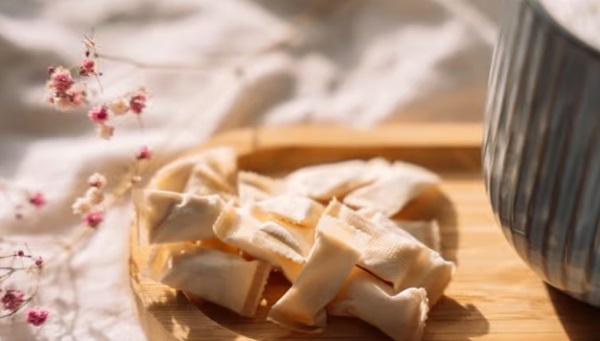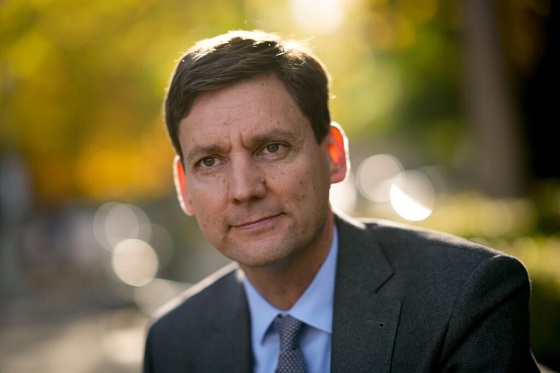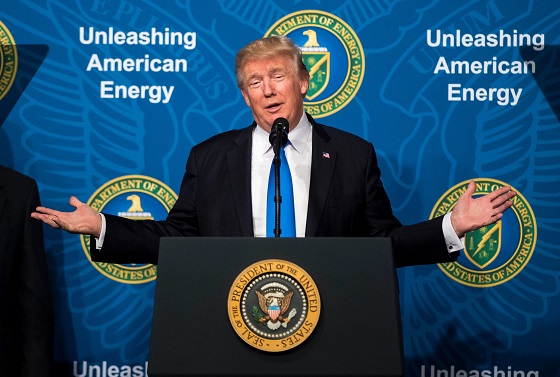Brownstone Institute
How Did a Small Group Do This?

From the Brownstone Institute
“You know, it’s kind of our own science experiment that we’re doing in real time.”
A very interesting study appeared last week by two researchers looking into the pandemic policy response around the world. They are Drs. Eran Bendavid and Chirag Patel of Stanford and Harvard, respectively. Their ambition was straightforward. They wanted to examine the effects of government policy on the virus.
In this ambition, after all, researchers have access to an unprecedented amount of information. We have global data on strategies and stringencies. We have global data on infections and mortality. We can look at it all according to the timeline. We have precise dating of stay-at-home orders, business closures, meeting bans, masking, and every other physical intervention you can imagine.
The researchers merely wanted to track what worked and what did not, as a way of informing future responses to viral outbreaks so that public health can learn lessons and do better next time. They presumed from the outset they would discover that at least some mitigation tactics achieved the aim.
It is hardly the first such study. I’ve seen dozens of such efforts, and there are probably hundreds or thousands of these. The data is like catnip to anyone in this field who is empirically minded. So far, not even one empirical examination has shown any effect of anything but that seems like a hard conclusion to swallow. So these two decided to take a look for themselves.
They even went to the next step. They assembled and reassembled all existing data in every conceivable way, running fully 100,000 possible combinations of tests that all future researchers could run. They found some correlations in some policies but the problem is that every time they found one, they found another instance in which the reverse seemed to be true.
You cannot infer causation if the effects are not stable.
After vast data manipulation and looking at every conceivable policy and outcome, the researchers reluctantly come to an incredible conclusion. They conclude that nothing that governments did had any effect. There was only cost, no benefit. Everywhere in the world.
Please just let that sink in.
The policy response destroyed countless millions of small businesses, ruined a generation in learning losses, spread ill health with substance abuse, wrecked churches that could not hold holiday services, decimated arts and cultural institutions, broke trade, unleashed inflation that is nowhere near done with us yet, provoked new forms of online censorship, built government power in a way without precedent, led to new levels of surveillance, spread vaccine injury and death, and otherwise shattered liberties and laws the world over, not to mention leading to frightening levels of political instability.
And for what?
Apparently, it was all for nought.
Nor has there been any sort of serious reckoning. The European Commission elections are perhaps a start, and heavily influenced by public opposition to Covid controls, in addition to other policies that are robbing nations of their histories and identities. The major media can call the victors “far right” all they want but this is really about common people simply wanting their lives back.
It’s interesting to speculate about precisely how many people were involved in setting the world on fire. We know the paradigm was tried first in Wuhan, then blessed by the World Health Organization. As regards the rest of the world, we know some names, and there were many cohorts in public health and gain-of-function research.
Let’s say there are 300 of them, plus many national security and intelligence officials plus their sister agencies around the world. Let’s just add a zero plus multiply that by the large countries, presuming that so many others were copycats.
What are we talking about here? Maybe 3,000 to 5,000 people total in a decision-making capacity? That might be far too high. Regardless, compared with the sheer number of people around the world affected, we are talking about a tiny number, a mico-percent of the world’s population or less making new rules for the whole of humanity.
The experiment was without precedent on this scale. Even Deborah Birx admitted it. “You know, it’s kind of our own science experiment that we’re doing in real time.” The experiment was on whole societies.
How in the world did this come to be? There are explanations that rely on mass psychology, the influence of pharma, the role of the intelligence services, and other theories of cabals and conspiracies. Even with every explanation, the whole thing seems wildly implausible. Surely it would have been impossible without global communications and media, which amplified the entire agenda in every respect.
Because of this, kids could not go to school. People in public parks had to stay within circles. Businesses could not open at full capacity. We developed insane rituals like masking when walking and unmasking when sitting. Oceans of sanitizer would be dumped on all people and things. People were made to be afraid of leaving their homes and clicked buttons to make groceries arrive on their doorsteps.
It was a global science experiment without any foundation in evidence. And the experience utterly transformed our legal systems and lives, introducing uncertainties and anxieties as never before and unleashing a level of crime in major cities that provoked residential, business, and capital flight.
This is a scandal for the ages. And yet hardly anyone in major media seems to be interested in getting to the bottom of it. That’s because, for bizarre reasons, looking too carefully at the culprits and policies here is regarded as being for Trump. And the hate and fear of Trump is so beyond reason at this point that whole institutions have decided to sit back and watch the world burn rather than be curious about what provoked this in the first place.
Instead of an honest accounting of the global upheaval, we are getting the truth in dribs and drabs. Anthony Fauci continues to testify for Congressional hearings and this extremely clever man threw his longtime collaborator under the bus, acting like David Morens was a rogue employee. That action seemed to provoke ex-CDC director Robert Redfield to go public, saying that it was a lab leak from a US-funded lab doing “dual purpose” research into vaccines and viruses, and strongly suggesting that Fauci himself was involved in the cover-up.
Among this group, we are quickly approaching the point of “Every man for himself.” It is fascinating to watch, for those of us who are deeply interested in this question. But for the mainstream media, none of this gets any coverage at all. They act like we should just accept what happened and not think anything about it.
This great game of pretend is not sustainable. To be sure, maybe the world is more broken than we know but something about cosmic justice suggests that when a global policy this egregious, this damaging, this preposterously wrongheaded, does all harm and no good, there are going to be consequences.
Not immediately but eventually.
When will the whole truth emerge? It could be decades from now but we already know this much for sure. Nothing we were promised about the great mitigation efforts by governments turned out to achieve anything remotely what they promised. And yet even now, the World Health Organization continues to uphold such interventions as the only way forward.
Meanwhile, the paradigm of bad science backed by force pervades nearly everything these days, from climate change to medical services to information controls.
When will evidence matter again?
Published under a Creative Commons Attribution 4.0 International License
For reprints, please set the canonical link back to the original Brownstone Institute Article and Author.
Brownstone Institute
Bizarre Decisions about Nicotine Pouches Lead to the Wrong Products on Shelves

From the Brownstone Institute
A walk through a dozen convenience stores in Montgomery County, Pennsylvania, says a lot about how US nicotine policy actually works. Only about one in eight nicotine-pouch products for sale is legal. The rest are unauthorized—but they’re not all the same. Some are brightly branded, with uncertain ingredients, not approved by any Western regulator, and clearly aimed at impulse buyers. Others—like Sweden’s NOAT—are the opposite: muted, well-made, adult-oriented, and already approved for sale in Europe.
Yet in the United States, NOAT has been told to stop selling. In September 2025, the Food and Drug Administration (FDA) issued the company a warning letter for offering nicotine pouches without marketing authorization. That might make sense if the products were dangerous, but they appear to be among the safest on the market: mild flavors, low nicotine levels, and recyclable paper packaging. In Europe, regulators consider them acceptable. In America, they’re banned. The decision looks, at best, strange—and possibly arbitrary.
What the Market Shows
My October 2025 audit was straightforward. I visited twelve stores and recorded every distinct pouch product visible for sale at the counter. If the item matched one of the twenty ZYN products that the FDA authorized in January, it was counted as legal. Everything else was counted as illegal.
Two of the stores told me they had recently received FDA letters and had already removed most illegal stock. The other ten stores were still dominated by unauthorized products—more than 93 percent of what was on display. Across all twelve locations, about 12 percent of products were legal ZYN, and about 88 percent were not.
The illegal share wasn’t uniform. Many of the unauthorized products were clearly high-nicotine imports with flashy names like Loop, Velo, and Zimo. These products may be fine, but some are probably high in contaminants, and a few often with very high nicotine levels. Others were subdued, plainly meant for adult users. NOAT was a good example of that second group: simple packaging, oat-based filler, restrained flavoring, and branding that makes no effort to look “cool.” It’s the kind of product any regulator serious about harm reduction would welcome.
Enforcement Works
To the FDA’s credit, enforcement does make a difference. The two stores that received official letters quickly pulled their illegal stock. That mirrors the agency’s broader efforts this year: new import alerts to detain unauthorized tobacco products at the border (see also Import Alert 98-06), and hundreds of warning letters to retailers, importers, and distributors.
But effective enforcement can’t solve a supply problem. The list of legal nicotine-pouch products is still extremely short—only a narrow range of ZYN items. Adults who want more variety, or stores that want to meet that demand, inevitably turn to gray-market suppliers. The more limited the legal catalog, the more the illegal market thrives.
Why the NOAT Decision Appears Bizarre
The FDA’s own actions make the situation hard to explain. In January 2025, it authorized twenty ZYN products after finding that they contained far fewer harmful chemicals than cigarettes and could help adult smokers switch. That was progress. But nine months later, the FDA has approved nothing else—while sending a warning letter to NOAT, arguably the least youth-oriented pouch line in the world.
The outcome is bad for legal sellers and public health. ZYN is legal; a handful of clearly risky, high-nicotine imports continue to circulate; and a mild, adult-market brand that meets European safety and labeling rules is banned. Officially, NOAT’s problem is procedural—it lacks a marketing order. But in practical terms, the FDA is punishing the very design choices it claims to value: simplicity, low appeal to minors, and clean ingredients.
This approach also ignores the differences in actual risk. Studies consistently show that nicotine pouches have far fewer toxins than cigarettes and far less variability than many vapes. The biggest pouch concerns are uneven nicotine levels and occasional traces of tobacco-specific nitrosamines, depending on manufacturing quality. The serious contamination issues—heavy metals and inconsistent dosage—belong mostly to disposable vapes, particularly the flood of unregulated imports from China. Treating all “unauthorized” products as equally bad blurs those distinctions and undermines proportional enforcement.
A Better Balance: Enforce Upstream, Widen the Legal Path
My small Montgomery County survey suggests a simple formula for improvement.
First, keep enforcement targeted and focused on suppliers, not just clerks. Warning letters clearly change behavior at the store level, but the biggest impact will come from auditing distributors and importers, and stopping bad shipments before they reach retail shelves.
Second, make compliance easy. A single-page list of authorized nicotine-pouch products—currently the twenty approved ZYN items—should be posted in every store and attached to distributor invoices. Point-of-sale systems can block barcodes for anything not on the list, and retailers could affirm, once a year, that they stock only approved items.
Third, widen the legal lane. The FDA launched a pilot program in September 2025 to speed review of new pouch applications. That program should spell out exactly what evidence is needed—chemical data, toxicology, nicotine release rates, and behavioral studies—and make timely decisions. If products like NOAT meet those standards, they should be authorized quickly. Legal competition among adult-oriented brands will crowd out the sketchy imports far faster than enforcement alone.
The Bottom Line
Enforcement matters, and the data show it works—where it happens. But the legal market is too narrow to protect consumers or encourage innovation. The current regime leaves a few ZYN products as lonely legal islands in a sea of gray-market pouches that range from sensible to reckless.
The FDA’s treatment of NOAT stands out as a case study in inconsistency: a quiet, adult-focused brand approved in Europe yet effectively banned in the US, while flashier and riskier options continue to slip through. That’s not a public-health victory; it’s a missed opportunity.
If the goal is to help adult smokers move to lower-risk products while keeping youth use low, the path forward is clear: enforce smartly, make compliance easy, and give good products a fair shot. Right now, we’re doing the first part well—but failing at the second and third. It’s time to fix that.
Addictions
The War on Commonsense Nicotine Regulation

From the Brownstone Institute
Cigarettes kill nearly half a million Americans each year. Everyone knows it, including the Food and Drug Administration. Yet while the most lethal nicotine product remains on sale in every gas station, the FDA continues to block or delay far safer alternatives.
Nicotine pouches—small, smokeless packets tucked under the lip—deliver nicotine without burning tobacco. They eliminate the tar, carbon monoxide, and carcinogens that make cigarettes so deadly. The logic of harm reduction couldn’t be clearer: if smokers can get nicotine without smoke, millions of lives could be saved.
Sweden has already proven the point. Through widespread use of snus and nicotine pouches, the country has cut daily smoking to about 5 percent, the lowest rate in Europe. Lung-cancer deaths are less than half the continental average. This “Swedish Experience” shows that when adults are given safer options, they switch voluntarily—no prohibition required.
In the United States, however, the FDA’s tobacco division has turned this logic on its head. Since Congress gave it sweeping authority in 2009, the agency has demanded that every new product undergo a Premarket Tobacco Product Application, or PMTA, proving it is “appropriate for the protection of public health.” That sounds reasonable until you see how the process works.
Manufacturers must spend millions on speculative modeling about how their products might affect every segment of society—smokers, nonsmokers, youth, and future generations—before they can even reach the market. Unsurprisingly, almost all PMTAs have been denied or shelved. Reduced-risk products sit in limbo while Marlboros and Newports remain untouched.
Only this January did the agency relent slightly, authorizing 20 ZYN nicotine-pouch products made by Swedish Match, now owned by Philip Morris. The FDA admitted the obvious: “The data show that these specific products are appropriate for the protection of public health.” The toxic-chemical levels were far lower than in cigarettes, and adult smokers were more likely to switch than teens were to start.
The decision should have been a turning point. Instead, it exposed the double standard. Other pouch makers—especially smaller firms from Sweden and the US, such as NOAT—remain locked out of the legal market even when their products meet the same technical standards.
The FDA’s inaction has created a black market dominated by unregulated imports, many from China. According to my own research, roughly 85 percent of pouches now sold in convenience stores are technically illegal.
The agency claims that this heavy-handed approach protects kids. But youth pouch use in the US remains very low—about 1.5 percent of high-school students according to the latest National Youth Tobacco Survey—while nearly 30 million American adults still smoke. Denying safer products to millions of addicted adults because a tiny fraction of teens might experiment is the opposite of public-health logic.
There’s a better path. The FDA should base its decisions on science, not fear. If a product dramatically reduces exposure to harmful chemicals, meets strict packaging and marketing standards, and enforces Tobacco 21 age verification, it should be allowed on the market. Population-level effects can be monitored afterward through real-world data on switching and youth use. That’s how drug and vaccine regulation already works.
Sweden’s evidence shows the results of a pragmatic approach: a near-smoke-free society achieved through consumer choice, not coercion. The FDA’s own approval of ZYN proves that such products can meet its legal standard for protecting public health. The next step is consistency—apply the same rules to everyone.
Combustion, not nicotine, is the killer. Until the FDA acts on that simple truth, it will keep protecting the cigarette industry it was supposed to regulate.
-

 Energy2 days ago
Energy2 days agoEby should put up, shut up, or pay up
-

 Business2 days ago
Business2 days agoPulling back the curtain on the Carney government’s first budget
-

 Daily Caller2 days ago
Daily Caller2 days agoUS Eating Canada’s Lunch While Liberals Stall – Trump Admin Announces Record-Shattering Energy Report
-

 Business2 days ago
Business2 days agoThe Liberal budget is a massive FAILURE: Former Liberal Cabinet Member Dan McTeague
-

 Business1 day ago
Business1 day agoCarney’s budget spares tax status of Canadian churches, pro-life groups after backlash
-

 COVID-191 day ago
COVID-191 day agoFreedom Convoy leader Tamara Lich to appeal her recent conviction
-

 Justice1 day ago
Justice1 day agoCarney government lets Supreme Court decision stand despite outrage over child porn ruling
-

 espionage22 hours ago
espionage22 hours agoU.S. Charges Three More Chinese Scholars in Wuhan Bio-Smuggling Case, Citing Pattern of Foreign Exploitation in American Research Labs












